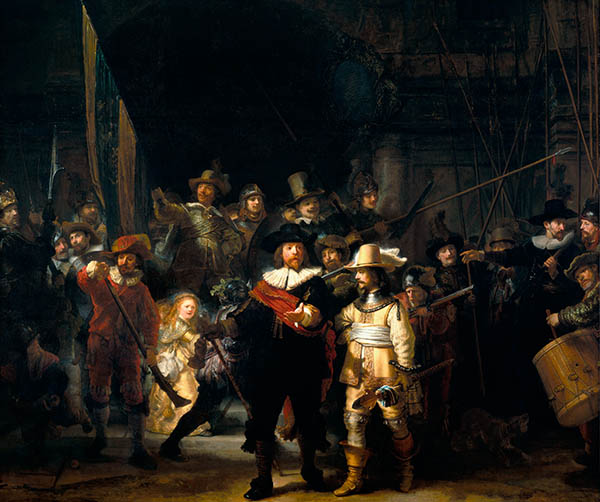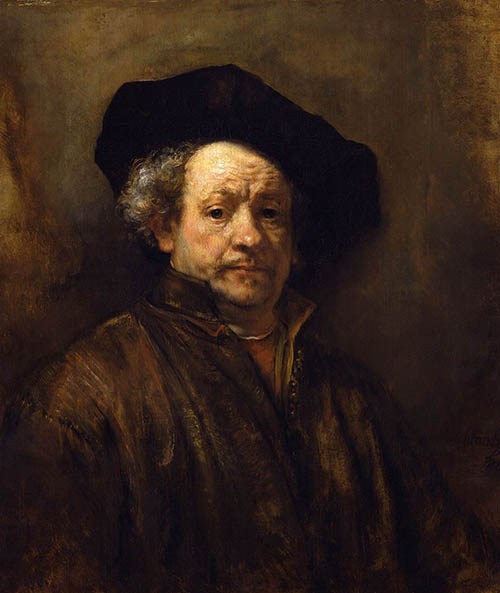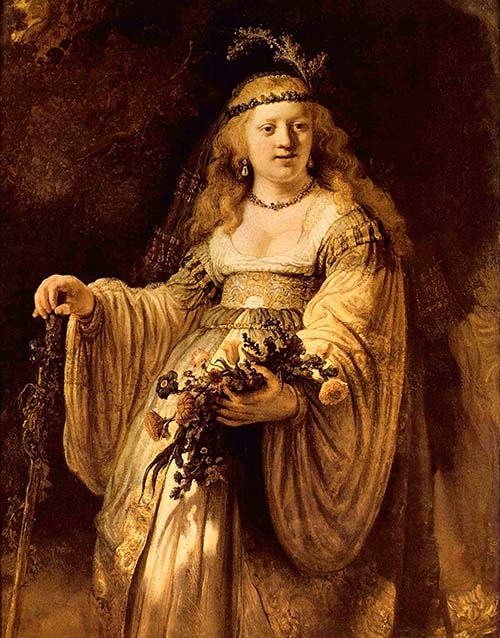Some Masterpieces from the Public Domain
Version 1.2, © 2009 by Dale Cotton, all rights reserved
Rembrandt
Update, May 2012: click on links provided for wallpaper-sized versions of select images.
Wikipedia entry for Rembrandt
I didn't have any particular attachment to Rembrandt's art until I started doing my own indoor nighttime candids. Rembrandt's dark backgrounds and yellow lighting now tell me what should have been obvious: that he painted what he saw indoors, and often by candle or lamp light. He must have bought sepia and ochre by the truck load.
The next painting is apparently the basis for an entire motion picture now in production. Here we have a very large scan file to work from with the colours distorted by a simple green cast. More problematic is that the sky and shadows are blacked out. Superficially, this blackness seems appropriate, especially given the common title, The Night Watch. But Wikipedia tells us the idea this is a night picture is a mistake:
For much of its existence, the painting was coated with a dark varnish which gave the incorrect impression that it depicted a night scene, leading to the name by which it is now commonly known. This varnish was removed only in the 1940s.
There is much more to the arch than I was able to recover, as you can see from this scan – which is unfortunately unusably out of focus.
The strangest element of this picture for me is what I immediately took to be the appearance of Saskia (Rembrandt's wife). You can read Wikipedia's explanation here. If this is indeed Saskia and she is indeed supposed to be a child, as her relative height suggests, what's jarring is the relatively adult proportions of head to body height.

Fig. 5-2: Rembrandt van Rijn: The Company of Frans Banning Cocq and Willem van Ruytenburch, known as the 'Night Watch', 1642
[Wallpaper version]
Rembrandt is often called the master of brush work, and looking at this self portrait at full scale or the following painting makes it immediately clear why. His fluid, confident lines are just the opposite of Vermeer's.

Fig. 5-3: Rembrandt van Rijn: Self-Portrait (with Black Beret), 1660
[Wallpaper version]

